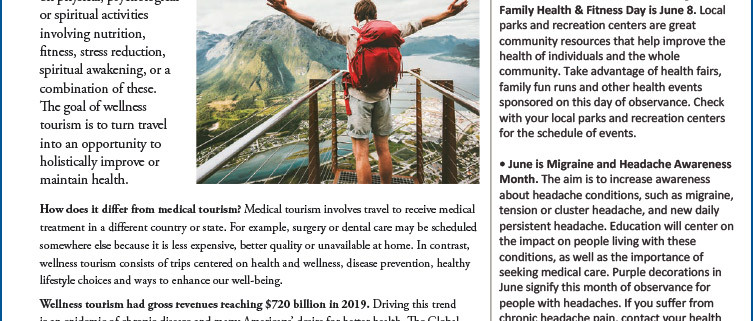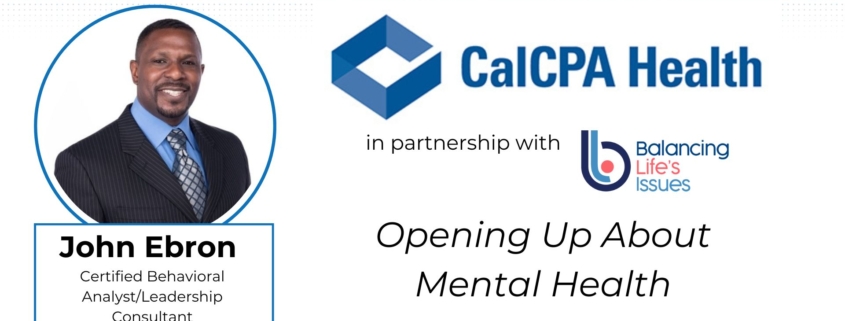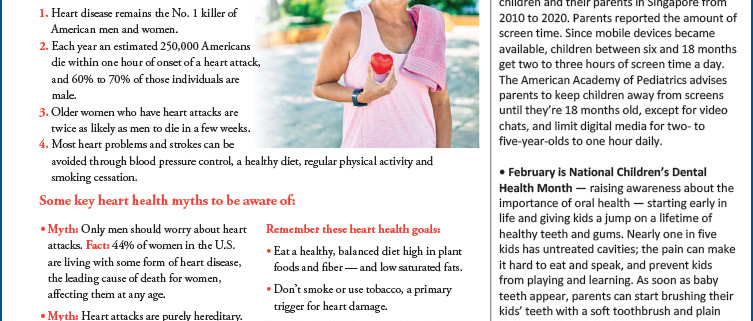News
Health Savings Accounts (HSAs) are valuable for managing healthcare costs, offering tax advantages and long-term savings opportunities. As a health insurance broker in California, you can leverage HSAs to build relationships with qualified* Certified Public Accountants (CPAs) and financial professionals (wealth management, advisors, financial institutions, etc.) who advise their clients on financial matters. Here is a guide on effectively selling HSAs to CPAs and financial professionals in California.
1. Understand the Benefits of HSAs
Just because a CPA or financial professional may have a strong understanding of finances and taxes does not mean they understand the full benefits of HSAs.
Before you approach these clients, ensure you have a comprehensive understanding of HSAs and the benefits they can provide:
*Tax Advantages: Contributions to HSAs are tax-deductible, grow tax-free, and can be withdrawn tax-free for qualified medical expenses. This means money can be earned (income), invested (investment returns), and used to pay expenses without ever being taxed.
*One way to look at the HSA tax advantage:
Example: An HSA subscriber in the 25% tax bracket is enrolled in a $2000 deductible qualified HDHP. Since they pay the deductible with pre-tax dollars, the $2000 deductible would be comparable to a $1500 non-HSA deductible plan. The tax-preferred effect (savings) continues beyond the deductible, all the way up to their out-of-pocket maximum. An $8,000 OOP max would behave like a $6,000 OOP max in a non-HSA plan.
*Cost Savings: HSAs are paired with qualified high-deductible health plans (HDHPs), which typically have lower premiums than comparable non-HSA plans.
*Tax-free Investment Returns: HSA funds can be invested, growing into a retirement nest egg similar to a 401K or IRA, except there are no Required Minimum Distributions, and you do not pay tax on the investment earnings when you use the money for qualified health care expenses.
*Flexibility and Ownership: The employee owns HSA funds and stays with them throughout their career (from job to job) and into retirement. There are no use-it-or-lose-it provisions like FSA’s.
Attract and Retain: HSAs have become a valuable tool in today’s tight labor market for employers to attract and retain talent. With no discrimination tests like 401K plans, employers easily add a valuable employee benefit to their benefits package.
Important Note: The tax effects mentioned above are federal taxes. California is one of only two states that do not recognize HSAs. Given this, the benefit from the federal tax effect is typically good enough to make the HSA math work for most companies and employees.
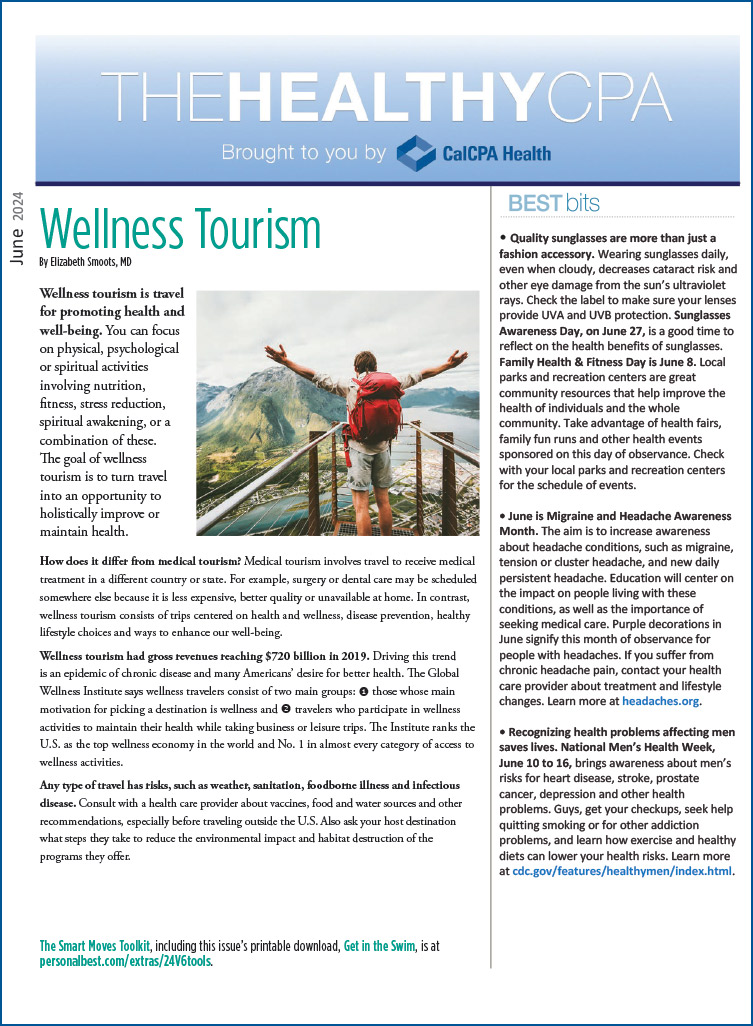 The eMagazine dedicated to improving members’ well-being
The eMagazine dedicated to improving members’ well-being
- Wellness Tourism
- Pleasures of Pickleball
- Strategies for Hot Weather
- PTSD and COVID-19 connection?
- MILK: Not Just From Cows
- Wildfire Smoke
- Getting Past Burnout
In each issue you will find information and inspiration to help you with your health and wellness goals.
In our first podcast on mental health, we explore discussing mental health openly, both at home and in the workplace. We’ll tackle the common roadblocks, such as generational views that often lead to mental health issues being ignored or dismissed and the stigma that seeking help is a sign of weakness. Mental health challenges vary widely in severity, but all experiences are valid and deserve acknowledgment and support. This podcast will cover key strategies to encourage openness – just by listening to this podcast, you are taking the first step in helping start conversations and foster a supportive community.
This podcast is for informational purposes only and should not be considered legal health or medical advice. CalCPA Health is not affiliated with Balancing Life Issues. The podcasts are provided by Balancing Life Issues to provide possible resources and helpful information.
 The eMagazine dedicated to improving members’ well-being
The eMagazine dedicated to improving members’ well-being
- Bone-Building Exercises
- TIAs: Warning Strokes
- Make the Most of the Mediterranean Diet
- The Truth About Weight Loss Supplements
- 5 Outdoor Lightning Precautions
In each issue you will find information and inspiration to help you with your health and wellness goals.
May is Mental Health Awareness Month, a time dedicated to raising awareness about mental health issues and breaking down the stigma that often surrounds mental illness. It’s an opportunity to remind ourselves and others that mental health is as important as physical health. Not paying attention to our mental health can hurt us on so many levels and debilitate our physical health and all other facets of life.
Understanding Mental Health
Mental health includes our emotional, psychological, and social well-being. It affects how we think, feel, and act in daily activities. It also influences how we handle stress, relate to others, and influence our choices. Mental health issues can affect anyone, irrespective of age, gender, socioeconomic status, or background.
The Importance of Seeking Help
Often, people hesitate to seek help for mental health issues due to stigma, fear of judgment, or simply not recognizing the signs in themselves. Acknowledging that you might need help is a significant first step. Getting treatment can provide the tools needed to help manage mental health effectively. Utilizing the tools and keeping the conversation open allows you to get the support you need and help the recovery process.
How to Get Help
1. Talk to Someone: Whether it’s a friend, family member, or a professional, sharing how you feel is the starting point.
2. Consult a Professional: A mental health professional can provide a diagnosis and provide a treatment plan that suits your needs.
3. Use Online Resources: Many organizations offer online resources and support groups that can provide guidance and connect you to others facing similar challenges. Please note that CalCPA Health medical subscribers can access LiveHealth Online and visit a therapist or psychologist from anywhere with access to a laptop, tablet, or mobile device and internet connection.
4. Emergency Help: If you or someone you know is in immediate danger, reaching out to emergency services can provide support and intervention right away. For information on emergency services for those in crisis or having suicidal thoughts, call the suicide prevention hotline 988 or visit online for resources or chat function.
Ending the Stigma
Being open about mental health can normalize these conversations and encourage more people to seek help. Sharing personal experiences and supporting those who are dealing with mental health issues are powerful ways to fight the stigma.
This Mental Health Awareness Month, let’s pledge to be open about our mental health, to support others without judgment, and to seek help when needed. Remember, it’s okay not to be okay, and it’s more than okay to ask for help.
The IRS has recently released the contribution limits for Health Savings Accounts (HSAs) for 2025. In 2024 we saw a significant increase, mainly in response to continued pressures from inflation. In the upcoming year, we will see another adjustment upwards, yet smaller than the 2024 increases.
For 2025, individuals with self-only coverage can contribute up to $4,300 to their HSAs, up from $4,150 in 2024. Family plans can contribute up to $8,550, up from $8,300 in 2024. This change reflects a steady acknowledgment of the need for greater financial flexibility in managing health expenses.
The IRS hasn’t released the 2025 catch-up contribution yet for those age 55 and older. It is currently set at $1,000 for 2024, unchanged from 2023.
According to Fidelity Investments’ 2023 Retiree Health Care Cost Estimate, a 65-year-old retiring this year can expect to spend an average of $157,500, or $315,000 per couple, in health care and medical expenses throughout retirement. Understanding how to save and invest with an HSA plan is key to helping you plan for future expected and unexpected medical expenses.
If you are in an HSA and have questions about how to get the most out of the plan, CalCPA Health can help answer your questions. Approximately 45% of CalCPA Health medical subscribers are enrolled in a Health Savings Account. Education is key and CalCPA Health is here to help – whether you are in one of our HSA plans or not. We are a resource for you – feel free to ask questions by emailing info@calcpahealth.com.
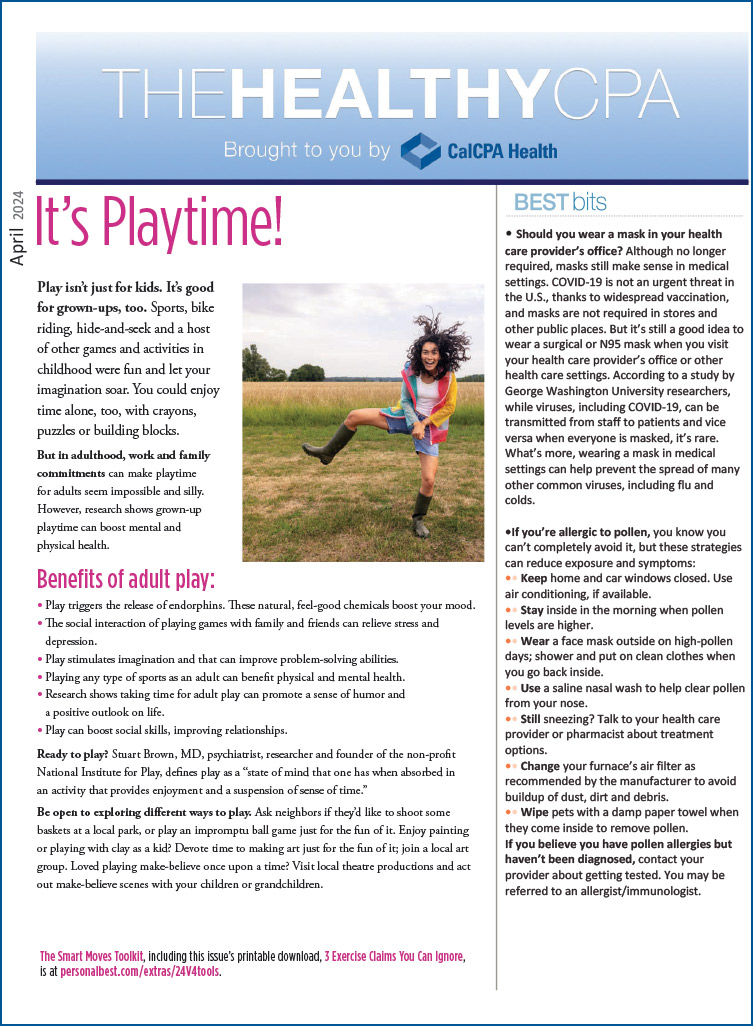 The eMagazine dedicated to improving members’ well-being
The eMagazine dedicated to improving members’ well-being
- Benefits of adult play
- ALCOHOL: What You Need to Know
- Trauma Dumping
- TOP 10 Eating Habits
- Signs of stress in children?
In each issue you will find information and inspiration to help you with your health and wellness goals.
 The eMagazine dedicated to improving members’ well-being
The eMagazine dedicated to improving members’ well-being
- Friendships Foster Good Health
- How much sleep do you need?
- Benefits of Weighted Gloves
- Dietitian’s Grocery List
- Daylight Saving Time and Your Health
- Extend Your Ladder Knowledge
- Slow Down Racing Thoughts
In each issue you will find information and inspiration to help you with your health and wellness goals.
February marks Heart Health Awareness Month, a time dedicated to raising awareness about cardiovascular health and encouraging individuals to take proactive steps toward maintaining a healthy heart. Heart disease remains one of the leading causes of death globally, highlighting the importance of understanding how to care for our hearts. According to the Centers for Disease Control and Prevention (CDC), about 695,000 people died from heart disease in 2021 in the United States which is 1 in every 5 deaths. * This month we will look at some important aspects of heart health, risk factors for heart disease, and tips for maintaining a healthy heart. Read more
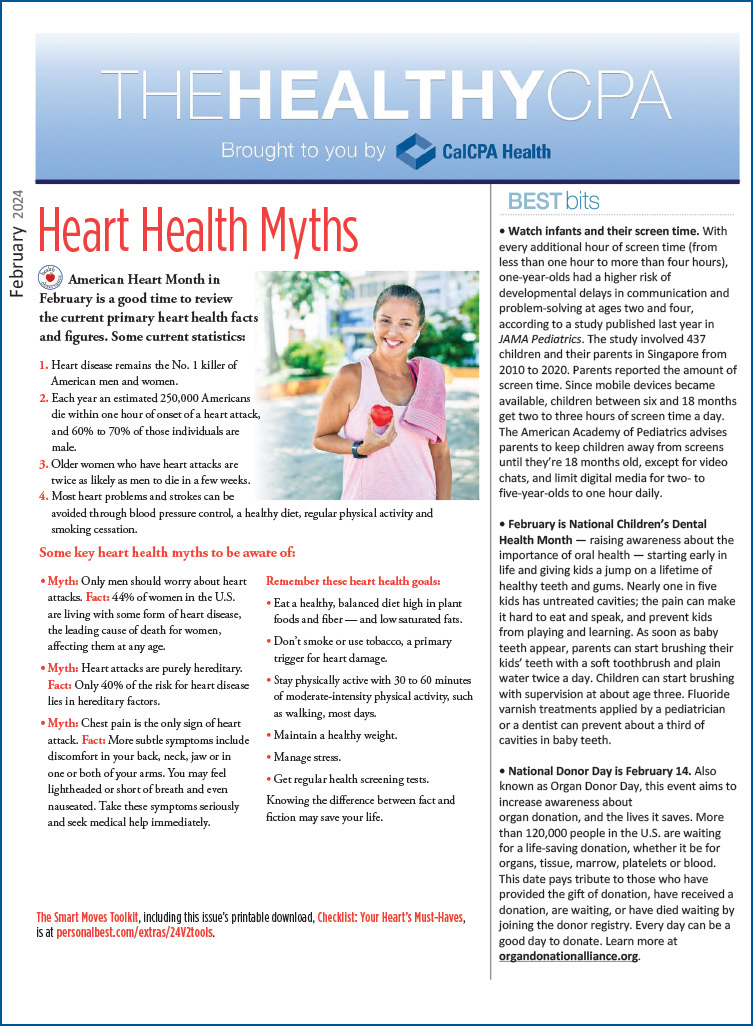 The eMagazine dedicated to improving members’ well-being
The eMagazine dedicated to improving members’ well-being
-
- Heart Health Myths
- Best Moves for Your Heart
- Dietary Supplements
- What is a Plant-Based Diet?
- Lemon-Butter Halibut
- Slow Down Racing Thoughts
In each issue you will find information and inspiration to help you with your health and wellness goals.

